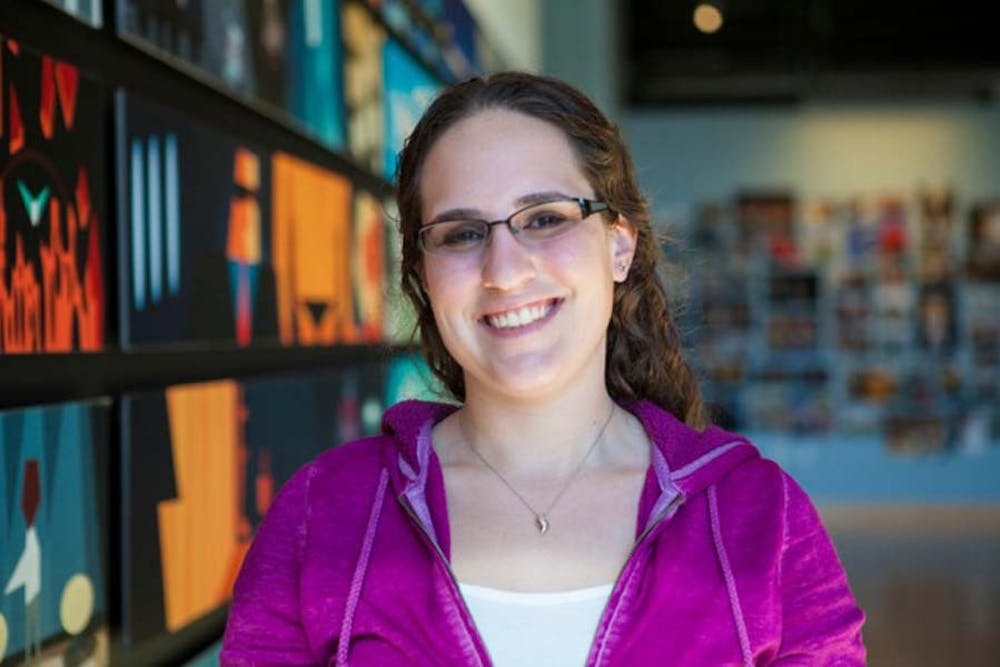For most students, working on a Oscar-nominated film at Pixar just a few years out of school would be a dream come true. For two Penn graduates, this dream is a reality.
Ariela Nurko, a 2009 Engineering graduate and 2005 Engineering graduate Paul Kanyuk are both part of the team that worked on the Oscar-nominated film, “Brave.” Both are graduates from the school’s Digital Media Design Program.
Nurko worked in the rendering department at Pixar Animation Studios while Kanyuk worked on animation for crowds in the film.
Kanyuk worked to create the large crowds of Scotsmen in the scenes in the Great Hall and at the Highland games in the film.
Crowds pose a unique challenge to animators. It would be too arduous to animate every single swish of a kilt or swing of a mace.
“It can take a professional animator one or two weeks to animate a single character. So when you have 100, 200 or even 1,000 characters on screen, in order to animate and render them all, you need a lot of technical tricks,” Kanyuk said.
Still the crowds in Brave are intricately detailed “especially in the opening scene where you see them fighting behind these barricades and yelling at each other,” said Kanyuk.
“Pretty much every character is individually directed and carefully placed. No two are the same. They all have very particular motions,” he said.
11/30/10: Creative students combine art, tech
9/25/07: Growing graphic-design program awakens students’ inner artist
1/12/99: Digital design major begins in style
While Kanyuk’s skill helped expedite the process of rendering a crowd, some characters in a crowd must still be animated individually.
“When Fergus [a character] does that big body slam, we had no idea how we were going to pull that off. That is actually just brute force animation,” he said.
According to Kanyuk, it is more difficult to animate a crowd of humans than a crowd of animals, robots or cars. Audiences are very well attuned to human facial expressions and movements. They will immediately notice if something is even slightly off.
“There’s a lot you can get away with with rats. You just make them a different size and change their groom and fur color and it’s clearly a different rat. With a person, you can’t just duplicate them,” he added.
Kanyuk’s all-time favorite crowd scene is the wildebeest stampede from “The Lion King,” which involves animals and early CG animation.
“It was a very dramatic and awe inspiring thing to behold those wildebeests coming down the cliff. It also was a vital plot point … It served spectacle, it moved the plot along and it was computer graphics,” he said.
The other difficulty in animating crowds comes from clothing, Kanyuk said. For example, the people in the movie “Wall-E” wore spandex, which had less movement and detail then the traditional Scottish kilts worn by the characters in Brave. “These medieval characters had lots of multi-layered costumes like kilts and tartans and beards and lots of secondary and complex motion,” he said. “To flesh that out for a whole crowd took quite a lot of work.”
When the film premiered in June 2012, the intricate detail of the hair of the main character, Merida, received a lot of attention. This also created a challenge for the rendering department.
“She had really curly hair and she had a lot of it.… It look[s] amazing when you look at it on screen,” Nurko said. “But it was one of those things we had to work on to make sure that we could render everything in a reasonable amount of time.”
Rendering is the final step in the animation process. After shots are rendered, they are sent to the director for approval, and then added to the film.
Animators at Pixar also made use of a new technology based on a recent Special Interest Group on Computer Graphics and Interactive Techniques paper called Loom. Loom enabled the animators to better emulate woven material on screen.
“If you look at Merida’s dress, you can see the stitches and you can also see the little fuzzies on it which would happen if you wove something … it was very cool,” Nurko said.
Improved technology is what makes images like Merida’s hair and the weaving on her dress possible.
“Every new movie that I’ve worked on since here has had new technology that can do amazing, amazing things … it’s just constantly evolving, which makes it really fun,” Nurko added.
Despite all the technological advances, animators still have a very challenging job.
“We just keep adding more artistic demands, more beautiful sets, more rich characters,” Kanyuk said. “Technology is not giving us a free ride. We’re working harder than ever.”



